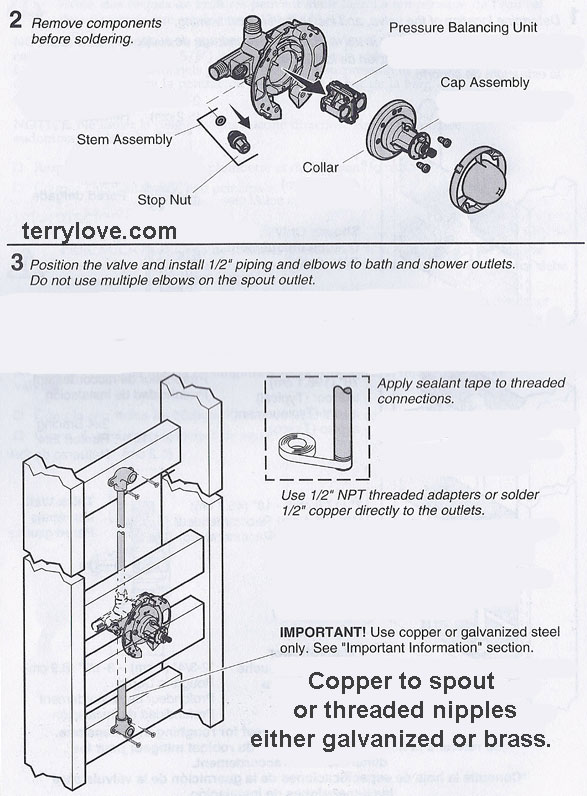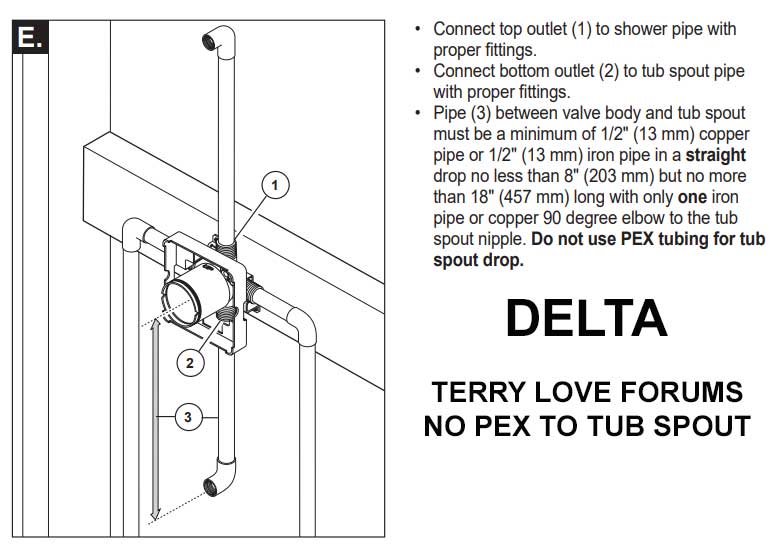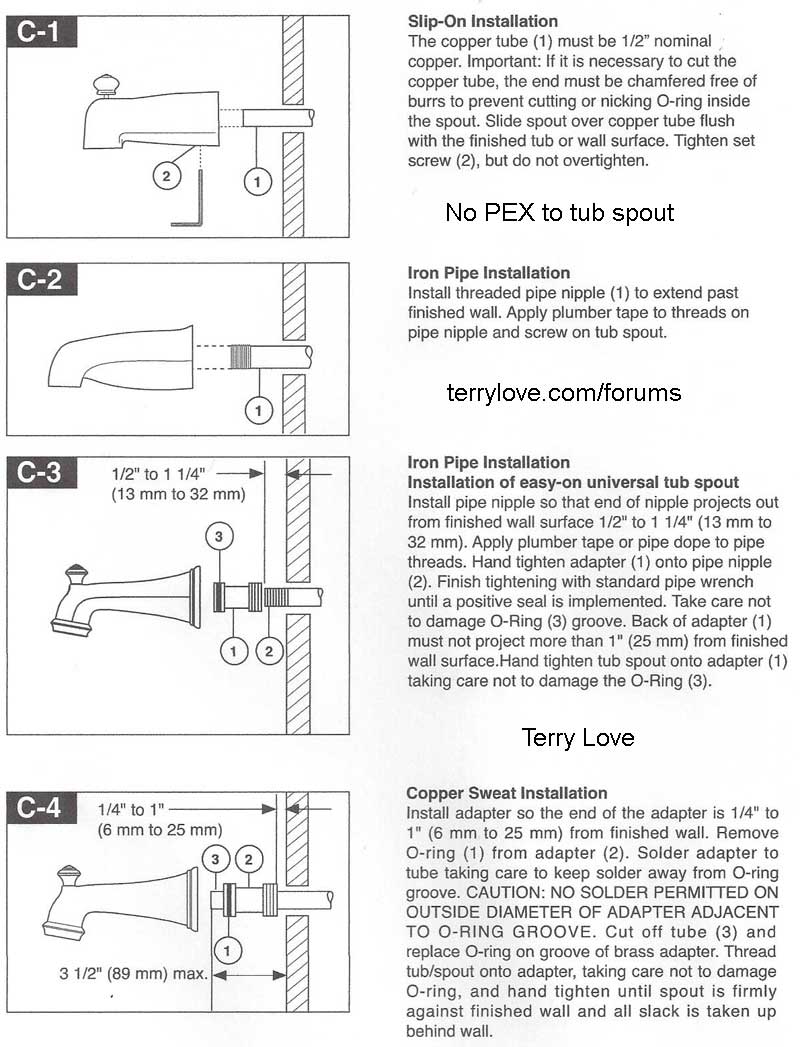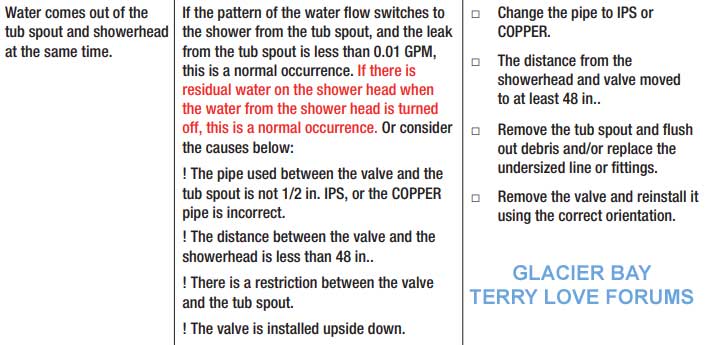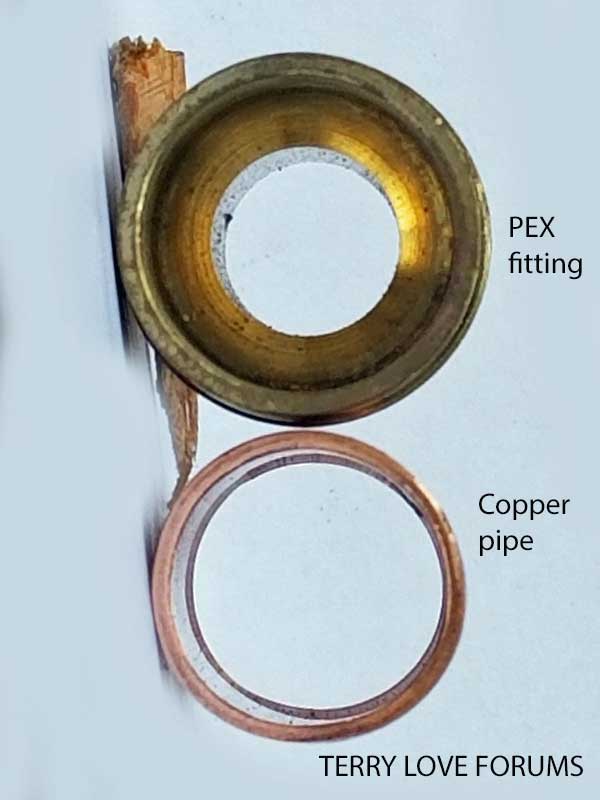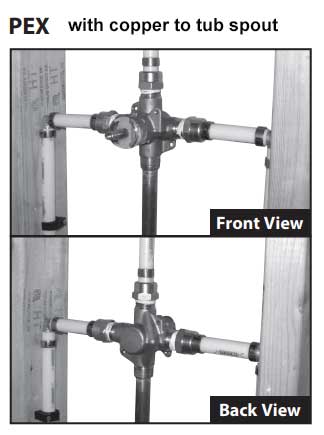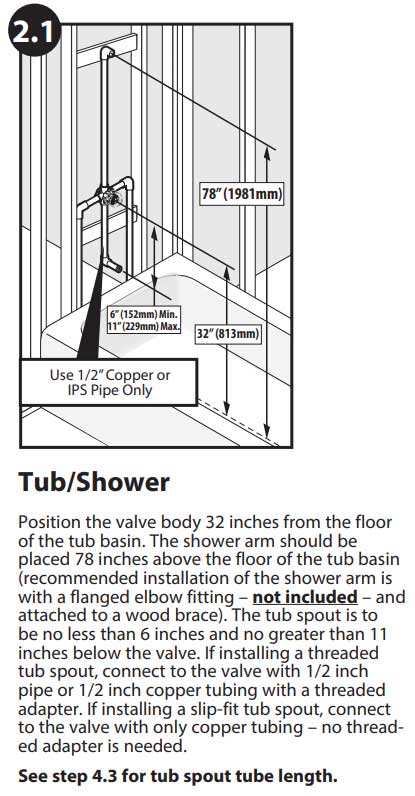Brandon Weiss
New Member
I know that there are a seemingly infinite number of threads on this forum about why not to use PEX to connect the mixing valve to the tub spout, but I’ve read a lot of them and while the explanations sort of make sense, I feel like I don’t understand them fully, and I’d like to understand the issue(s) a little better.
If someone wouldn’t mind checking my understanding on these two points I’d very grateful.
Common wisdom is not to use PEX to the tub spout because it’s “floppy” and the tub spout won’t be well-supported. Is that because it’s normal to use just a 90° elbow to mount the tub spout to? I’ve only ever seen the drop-ears that screw to some wood backing. I assume if you used one of those that would mitigate the issue?
Common wisdom is not to use PEX to the tub spout because the smaller ID relative to copper pipe will cause water to flow up through the shower head. Is that only when using a tub spout with a built-in diverter? If you used a mixing valve with multiple outlets that has a knob to control which outlet is open (so the diverter is in the valve itself), I assume that would mitigate the issue?
Is there anything else I missed? Some other reason why you wouldn’t want to use PEX to the tub spout?
Thanks so much!
If someone wouldn’t mind checking my understanding on these two points I’d very grateful.
Common wisdom is not to use PEX to the tub spout because it’s “floppy” and the tub spout won’t be well-supported. Is that because it’s normal to use just a 90° elbow to mount the tub spout to? I’ve only ever seen the drop-ears that screw to some wood backing. I assume if you used one of those that would mitigate the issue?
Common wisdom is not to use PEX to the tub spout because the smaller ID relative to copper pipe will cause water to flow up through the shower head. Is that only when using a tub spout with a built-in diverter? If you used a mixing valve with multiple outlets that has a knob to control which outlet is open (so the diverter is in the valve itself), I assume that would mitigate the issue?
Is there anything else I missed? Some other reason why you wouldn’t want to use PEX to the tub spout?
Thanks so much!

